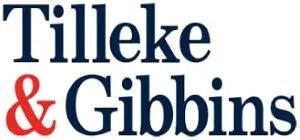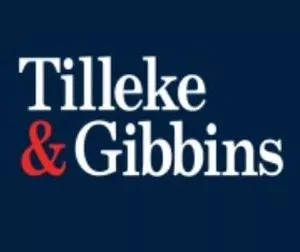The Country at a Glance
What languages are spoken?
| Official language: | Thai |
| Business languages: | Thai and English, and in some circles Japanese, several Chinese dialects, Bahasa Melayu, and other languages of South Asia. |
What is the current (as of November 2, 2023) exchange rate for the
U.S. dollar, the euro, and the yen?
| USD 1 | = | THB 36.02 (mid-market) |
| EUR 1 | = | THB 38.18 (mid-market) |
| JPY 100 | = | THB 23.94 (mid-market) |
Describe your country's geography, proximity to other
countries, and climate.
Thailand is approximately 513,120 sq. km. in area, about the size of France or Texas, with a population of nearly 70 million, and GDP (Purchasing Power Parity) of about USD 1.34 trillion for 2020.
Thailand has four main geographic regions: the mountainous and forested North, the fertile central plain, the arid Northeast, and the hilly South. Located in the middle of Southeast Asia, Thailand's immediate neighbors are Cambodia, Laos, Malaysia, and Myanmar. Nearby are China, Indonesia, Singapore, and Vietnam. The climate is generally sunny, tropical, and very humid, with a rainy season from June to October.
Are there cultural influences or prohibitions on the way business is conducted?
Thai culture significantly influences business dealings. Although different behaviors are accepted, most find the optimal approach to be one of politeness and respect without ever losing one's temper or raising one's voice. Conflicts should be resolved by polite discussion. Personal ties and trust also tend to be very important to the Thai people; accordingly, direct personal questions are common and not inappropriate. At the same time, people tend to be indirect in their dealings with each other and go around an issue or address a source of tension indirectly rather than going directly to the key point. These typical behaviors are not uniform, however. There are also notable currents that challenge established norms of the society by questioning the status quo and arguing for greater and more standardized openness, transparency, and accountability.
Are there religious influences or prohibitions on the way business is conducted?
The population is largely homogeneous and has relatively little racial or religious strife. Of the 25% who are not ethnically Thai, the majority are ethnic Chinese who have had an economic impact over the past century far outweighing their numbers. About 93% of Thais are Buddhist, 5% are Muslim, 1% are Christian, and a handful of other religions make up the remaining 1%. Although Buddhism imposes no specific prohibitions on business, the religion exerts influence on business dealings in that the Thai people tend to adhere to Buddhist principles such as avoidance of conflict and respect for established hierarchy.
Explain your country's infrastructure. Be sure to explain which cities have airports, railroad systems, ports, and public transportation.
Thailand was traditionally an agrarian economy, but since the Second World War, as a market-driven economy, it has developed sizeable industrial and services bases. Since the mid-1970s, industrialization has increased and investment has been directed toward export-oriented activities and the services industries. Between 1984 and 1994, Thailand had the most rapid economic expansion of any country in the world. Some of the country's infrastructure has been criticized as insufficient, but there have been numerous initiatives to make improvements in this area, including many that are currently underway.
Airports. As of 2023, Thailand has 11 international airports, plus another 28 providing scheduled commercial domestic services. Of these, the North has airports located in Chiang Mai, Chiang Rai, Lampang, Mae Hong Son, Mae Sariang, Mae Sot, Nan, Pai, Phetchabun, Phitsanulok, Phrae, Sukhothai, and Tak. In the Northeast, there are airports in Betong, Buri Ram, Khon Kaen, Loei, Nakhon Phanom, Roi Et, Sakon Nakhon, Ubon Ratchathani, and Udon Thani. In the South, there are airports in Chumphon, Hat Yai, Ko Samui, Krabi, Nakhon Si Thammarat, Narathiwat, Pattani, Phuket, Ranong, Surat Thani, and Trang. In central Thailand, there are airports in Bangkok (Don Mueang and Suvarnabhumi), Hua Hin, Nakhon Sawan, and U-Tapao (Rayong/Pattaya). There is also an airport in Trat, the country's easternmost province on the Gulf of Thailand.
Bangkok's Suvarnabhumi Airport, which opened in 2006, is located approximately 25 kilometers east of central Bangkok. Built to accommodate 45 million passengers per year, the airport has been accommodating significantly higher numbers in recent years. As such, expansion is currently underway to accommodate these increased numbers. Don Mueang Airport, which also serves Bangkok, is the oldest operating airport in Asia and is located approximately 20 kilometers north of central Bangkok. It has become a hub for regional aircraft and low-cost airlines. A major redevelopment of U-Tapao Airport is now in the works.
Thai-flagged passenger airlines include Bangkok Airways, Nok Air, Thai AirAsia and Thai AirAsia X, Thai Airways, Thai Lion Air, Thai Smile (soon to be dissolved and merged into its parent, Thai Airways), and Thai Vietjet Air. Thailand also receives extensive service from foreign-flagged airlines.
Rail Systems. From Bangkok, passenger and freight trains run regularly to the outer surrounding areas as well as to farther destinations north, south, east, and west. There are rail links to Malaysia and Laos, while rail links to Cambodia and Myanmar are expected in the future. Multiple other rail expansion projects are planned for the near future. High-speed and dual-track railway projects are also in the planning and construction stages.
Ports. Major seaports are located at Bangkok (Klong Toey), Laem Chabang, Map Ta Phut, Prachuap, and Si Racha.
Public Transportation. Greater Bangkok features local rail services in the forms of subway, at grade, and elevated. There are numerous rail expansion projects currently underway. Many public buses also operate in Greater Bangkok.
Road System. Thailand has more than 390,000 kilometers of roads, almost all of which are paved. This includes a national highway network of over 70,000 kilometers.
Explain the communications system.
Thailand's telecommunications industry has evolved rapidly over the last 30 years.
In the past, telecommunications services were provided exclusively through two state enterprises— which are now TOT Corporation Public Company Limited (TOT) and CAT Telecom Public Company Limited (CAT)—and through the Post and Telegraph Department (PTD) of the Ministry of Transport and Communications. Since the late 1980s, the private sector has been allowed to operate within the Thai telecommunications market by obtaining concessions, and more recently, licenses. Concessions were given by TOT, CAT, or PTD to local companies, many of which formed joint ventures with foreign telecommunications companies. Aside from TOT and CAT, there are six private providers of landline telephone services.
While TOT and CAT also have mobile phone businesses, the private operators are significantly larger. These private operators include AIS (part of Singtel group), DTAC (part of Telenor group), and True (with significant investment from China Mobile). DTAC and True are in the process of completing a merger, which leaves Thailand with two major private operators. There are also mobile virtual network operators (MVNOs).
Describe the public services, i.e., water, electricity, gas. Are they publicly or privately owned?
Water. The Metropolitan Waterworks Authority (MWA), supervised by the Ministry of Interior, is the operator of the waterworks for Bangkok and the neighboring provinces of Nonthaburi and Samut Prakan. A main issue confronting the MWA is the potential lack of water available to Bangkok, in response to which many private parties have constructed over 14,000 artesian wells. Even though the underground water table has dropped dramatically and saltwater intrusion is occurring, the MWA's efforts to ban artesian wells have thus far been unsuccessful. The MWA's main source of raw water, the Chao Phraya River, is suffering vast pollution due to silting, agricultural chemical and pesticide runoff, untreated urban sewage, and industrial discharges.
The Provincial Waterworks Authority (PWA), also supervised by the Ministry of Interior, is the operator of the waterworks system for the rest of Thailand. Its publicly owned subsidiary, Eastern Water Resources Development (East Water), provides water to the industrial estates in Chon Buri, Rayong, Chachoengsao, and provinces in the eastern part of the country.
The PWA's and the MWA's plans for privatization have not yet been implemented. However, even before Thailand entered the International Monetary Fund's (IMF) bail-out program stemming from the 1997 Asian financial crisis, Thailand had privatized part of its water supply in the provinces. The PWA operated its raw-water supply subsidiary East Water and awarded a build-own-transfer concession to a private consortium led by a U.K. water-utility company and construction firm.
Electricity. The state-owned Electricity Generating Authority of Thailand (EGAT), controlled by the Office of the Prime Minister, is the main electricity producer and distributor in Thailand. Additional electricity is provided by Independent Power Producers (IPPs) and Small Power Producers (SPPs), and some from generation in Laos and Malaysia.
Distribution of electricity in Thailand is provided mainly through the Metropolitan Electricity Authority (MEA) and the Provincial Electrical Authority (PEA), both of which are state enterprises. The National Energy Policy Committee sets the rates that EGAT charges the MEA and the PEA.
Oil and Gas. The state-owned Petroleum Authority of Thailand (PTT), controlled by the Ministry of Industry, is the leading petroleum and natural gas producer, wholesaler, and retailer. In addition to being the country's leading oil retailer and sole distributor of indigenous natural gas, PTT has interests in Thailand's petrochemical sector.
In October 2001, in accordance with privatization plans, PTT became the PTT Public Company Limited with an initial registered capital of THB 20 billion. At present, the registered capital of PTT is around THB 28.5 billion.
Exploration for oil and gas is conducted by major upstream field developers under concessions from the Ministry of Energy. This industry is dominated by U.S. petroleum companies. Chevron's largest gas fields in Thailand are located offshore, and the company also happens to be one of Thailand's largest foreign investors. PTT conducts exploration and production through its subsidiary, PTT Exploration and Production Company Limited (PTTEP). PTTEP has invested in some 37 projects, including sites in Algeria, Brazil, Cambodia, Canada, Indonesia, Iran, Malaysia, Mexico, Mozambique, Myanmar, Oman, Thailand, and Vietnam.
Oil is refined in Thailand by Bangchak Petroleum Public Co., Ltd., Star Petroleum Refining Co., Ltd., Thai Oil Public Co., Ltd., and PTT Global Chemical Public Co., Ltd. PTT is a significant shareholder in most of Thailand's oil refining companies.
Retailing of gasoline, diesel oil, and other petroleum products for consumers and industrial operations is undertaken by an array of dealers representing PTT and the foreign marketing operations of Shell, Esso, Chevron, and others.
To view the full article, click here.
The content of this article is intended to provide a general guide to the subject matter. Specialist advice should be sought about your specific circumstances.

